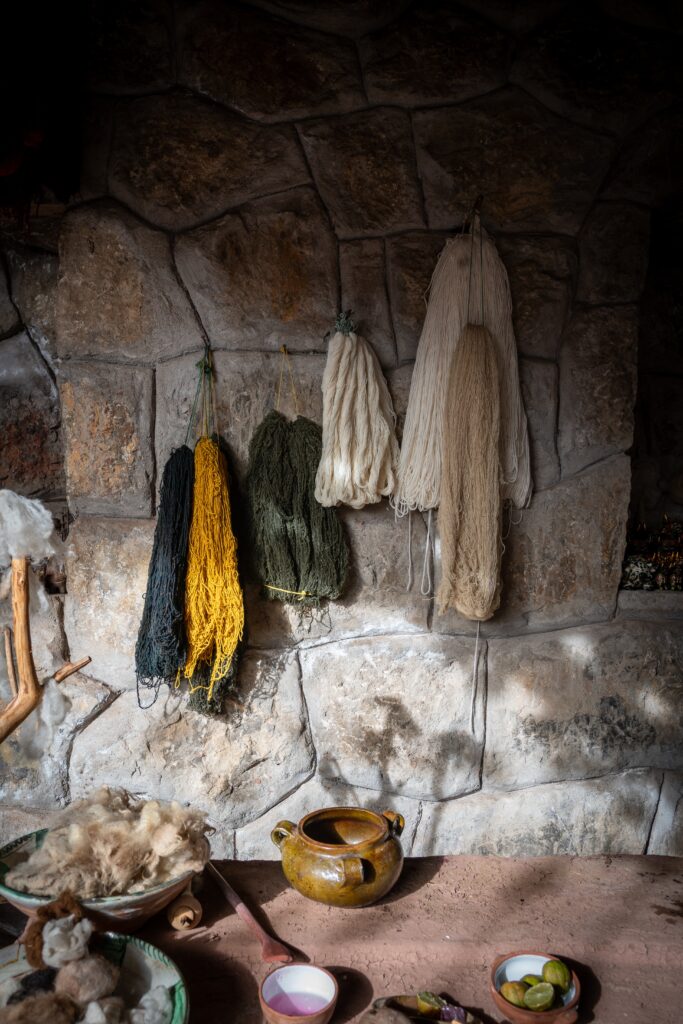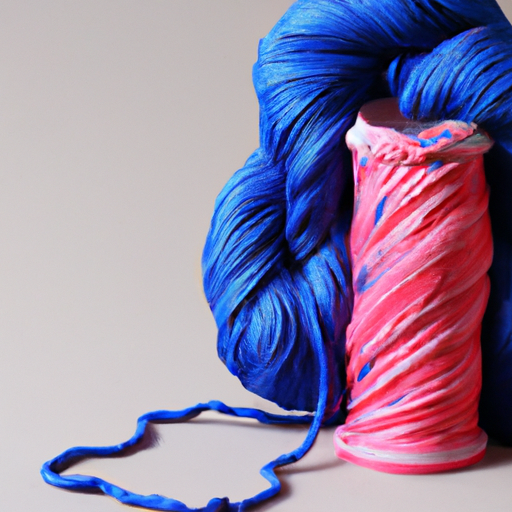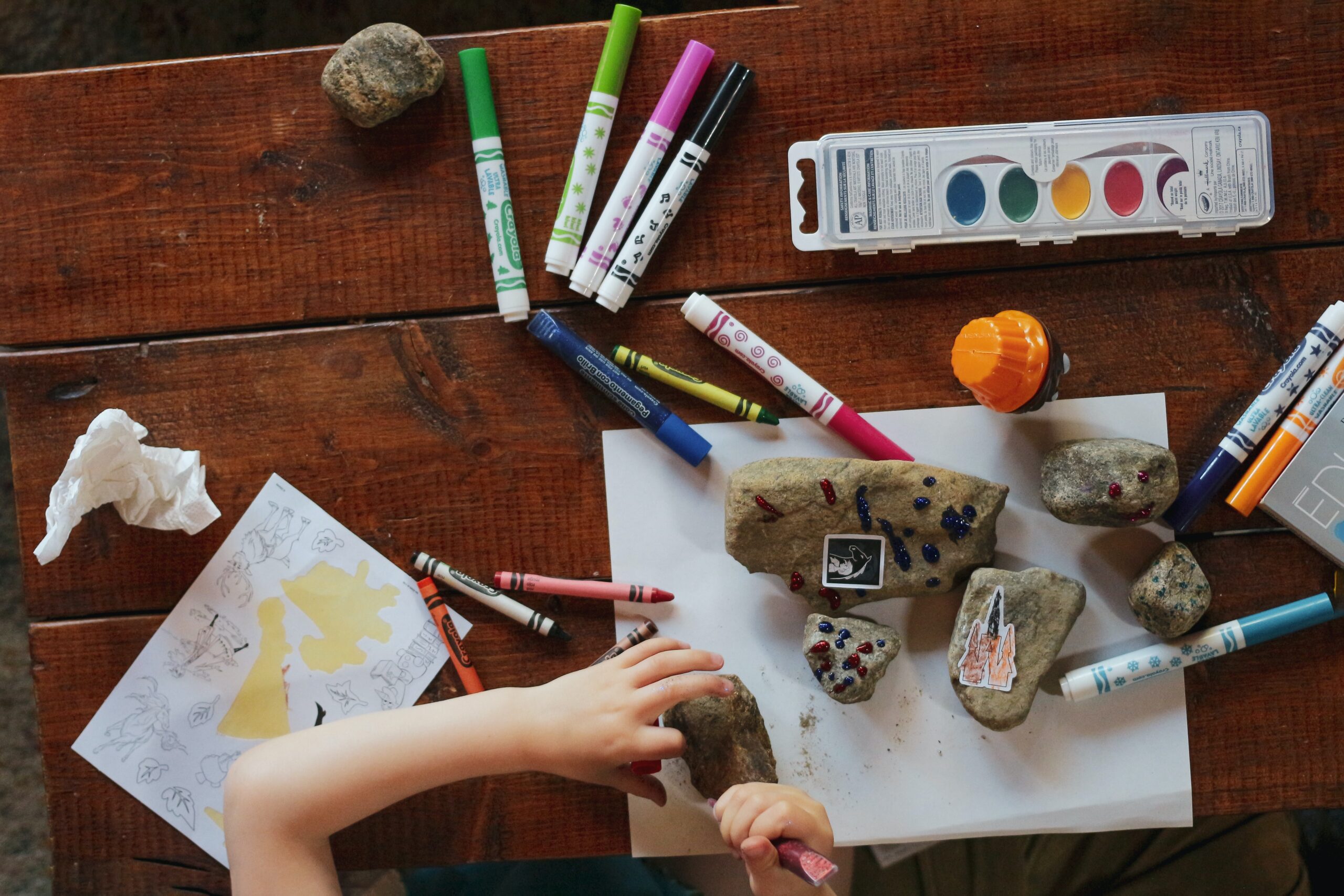In this article, you will learn a fun and creative way to dye yarn using acrylic paint. Whether you are a seasoned knitter or just looking to try a new craft, this method is perfect for adding vibrant and unique colors to your yarn collection. With just a few simple materials and a bit of creativity, you’ll be able to transform plain yarn into a work of art. So, grab your acrylic paint and get ready to unleash your inner artist as we explore the exciting world of yarn dyeing!

Choosing the Right Yarn
Selecting the Appropriate Yarn Fiber
When it comes to dyeing yarn with acrylic paint, it’s important to choose the right type of yarn. Acrylic yarn is the best option for this method because it readily accepts the dye and retains its vibrant colors. Other natural fibers such as wool or cotton may require different techniques and dyes. So, make sure to opt for acrylic yarn for the best results.
Opting for Light-Colored Yarn
While you can technically dye any color of yarn with acrylic paint, it’s generally recommended to start with light-colored yarn. Light colors such as white or pastels provide a blank canvas for the dye to fully showcase its vibrancy. If you choose a darker yarn, the original color may affect the final result. So, if you’re a beginner, it’s best to start with light-colored yarn until you get the hang of the process.
Preparing the Dyeing Area
Gathering the Necessary Equipment
Before you start the dyeing process, it’s important to gather all the necessary equipment. This includes a large pot or pan for heating the dye solution, tongs or a spoon for handling the yarn, plastic containers for mixing the dye, measuring cups, gloves to protect your hands, and a stove or hot plate for heating the dye bath. Make sure to have everything ready so that you can have a smooth and efficient dyeing process.
Setting up a Designated Work Space
Dyeing yarn can get messy, so it’s important to set up a designated work space to contain any spills or drips. Choose a well-ventilated area with a flat surface that is easy to clean, such as a kitchen counter or a table covered with plastic. Lay down a plastic tablecloth or old towels to protect the surface from any potential stains. Having a designated work space will help you stay organized and keep the dyeing process under control.
Preparing the Yarn
Skeining the Yarn
Before you start dyeing, you’ll need to skein the yarn. This involves winding the yarn into a loose loop or hank. You can do this by either finding the inner end of the yarn and carefully pulling it out or by using a swift and winder. Skeining the yarn helps to ensure an even distribution of color and allows the dye to penetrate the fibers more effectively.
Preparing the Yarn for Dyeing
Once the yarn is skeined, it’s important to prepare it for dyeing. Start by soaking the yarn in lukewarm water to remove any dirt or oils. Gently agitate the yarn to ensure it is fully saturated. You can also add a mild detergent or a yarn-specific cleanser to help remove any residual oils. After soaking, squeeze out the excess water by gently pressing the yarn between your hands. Making sure the yarn is clean and damp will help the dye adhere evenly and give you better results.
Mixing the Dye
Using Acrylic Paint as Dye
One of the great things about dyeing yarn with acrylic paint is that you can easily create a wide range of colors by mixing different shades of paint. Acrylic paint works well as a dye because it is water-based and highly pigmented. This means it can penetrate the yarn fibers and create vibrant, long-lasting colors. Make sure to choose high-quality acrylic paint for the best results.
Preparing the Dye Solution
To create the dye solution, start by mixing the desired acrylic paint colors with water. The ratio of paint to water will depend on the intensity of color you want to achieve. Start with a small amount of paint and gradually add water until you reach the desired consistency. Stir the mixture well to ensure the paint is fully dissolved. You can also experiment with different paint-to-water ratios to achieve different shades and effects. Once the dye solution is prepared, it’s time to move on to applying the dye to the yarn.

Applying the Dye
Choosing Dye Application Techniques
There are various techniques you can use to apply the dye to the yarn, depending on the effect you want to achieve. Some popular techniques include immersion dyeing, hand-painting, dip-dyeing, and tie-dyeing. Each technique offers a unique way to create patterns and colors on the yarn. You can also combine different techniques to create more complex designs. Experimenting with different application techniques will help you discover your own personal style and create one-of-a-kind yarns.
Applying the Dye to the Yarn
Once you’ve chosen your dye application technique, it’s time to apply the dye to the yarn. Using gloves to protect your hands, carefully dip or paint the yarn with the dye solution. Make sure to fully saturate the yarn and work the dye into the fibers to ensure even color distribution. You can use a spoon, a brush, or your fingers to apply the dye, depending on the technique you’re using. Be creative and have fun with the process, knowing that each strand of yarn will turn into a unique piece of art.
Setting the Dye
Using Heat to Set the Dye
After applying the dye, it’s important to set it properly to ensure the colors stay vibrant and don’t bleed. The most common method for setting the dye is using heat. Start by placing the dyed yarn in a plastic bag or wrapping it in plastic wrap to prevent the dye from drying out. Then, either steam the yarn by placing it in a steamer or simply heat it in the microwave or oven. Follow the instructions provided with your acrylic paint and adjust the heating time accordingly. Setting the dye with heat will help the colors bond with the yarn fibers and create a long-lasting result.
Alternative Setting Methods
If you don’t have access to heat or prefer an alternative method, you can also set the dye using vinegar or heatless options. To set the dye with vinegar, add around 1 cup of white vinegar to a large pot of water and bring it to a simmer. Carefully place the dyed yarn in the pot and let it simmer for about an hour. After simmering, remove the yarn, rinse it thoroughly, and let it dry. This method helps to set the dye without the need for heat. Other heatless methods include using color fixatives or letting the dyed yarn sit for an extended period before rinsing.

Rinsing and Washing the Yarn
Rinsing Out Excess Dye
After the dye has been set, it’s important to rinse out any excess dye to prevent bleeding and color transfer. Start by filling a sink or basin with lukewarm water and gently placing the dyed yarn in it. Let the yarn soak for a few minutes and carefully agitate it to release any remaining dye. Repeat this process until the water runs clear, indicating that all excess dye has been removed. Take your time during this step to ensure the yarn is thoroughly rinsed.
Washing and Conditioning the Yarn
Once the excess dye has been rinsed out, it’s time to wash and condition the yarn. Use a mild detergent or a yarn-specific cleanser to wash the yarn and remove any residual dye or chemicals. Gently massage the yarn to cleanse it thoroughly without causing any damage. After washing, rinse the yarn again with lukewarm water to ensure all traces of detergent or cleanser are removed. Finally, apply a conditioner specifically designed for yarn to soften and protect the fibers. This step will leave your yarn feeling soft, smooth, and ready for use in your next project.
Drying and Finishing the Yarn
Drying the Dyed Yarn
To dry the dyed yarn, gently squeeze out any excess water by pressing it between your palms. Avoid wringing or twisting the yarn, as this can cause it to lose its shape or stretch. Lay the yarn flat on an absorbent towel or hang it up with clothespins to allow it to air dry. Avoid direct sunlight, as it can cause fading or damage to the colors. Depending on the thickness of the yarn and the humidity level, it may take a few hours or even a full day for the yarn to completely dry. Be patient and wait until it is fully dry before moving on to the next step.
Reskeining and Labeling the Yarn
Once the yarn is dry, it’s time to reskein it and add labels. Reskeining involves winding the yarn into a neat and organized hank or skein. This step not only makes the yarn easier to store but also allows you to inspect it for any inconsistencies or flaws. You can use a swift and winder to quickly reskein the yarn, or wind it by hand using the help of a friend or a yarn winder. After reskeining, add labels to the yarn with information such as the fiber content, the dye used, and any other relevant details. Labeling your yarn will help you keep track of your dyeing experiments and ensure you know exactly what you’re working with in the future.

Troubleshooting and Tips
Fixing Uneven or Patchy Dyeing
If you encounter uneven or patchy dyeing during the process, don’t worry! There are several ways to fix it. One method is to reapply the dye to the affected areas and let it sit for a little longer. You can also try diluting the dye solution and applying it to the areas in question. If the patchiness is minor, you can blend the colors by gently agitating the dye while the yarn is still wet. Remember, dyeing yarn is a creative process, and even unexpected results can lead to beautiful outcomes. Embrace the imperfections and have fun experimenting with different techniques and color combinations.
Experimenting with Color Variations
One of the most exciting aspects of dyeing yarn with acrylic paint is the ability to experiment with color variations. You can create ombre effects by gradually changing the concentration of the dye, or you can combine different colors to achieve unique shades. Mixing primary colors can result in a whole spectrum of secondary colors and open up endless possibilities for creative expression. Don’t be afraid to step outside your comfort zone and try new combinations. Keep a record of the colors and techniques you use, so you can replicate your favorite results or build upon them in future dyeing projects.
Safety Considerations
Protecting Yourself and the Environment
While dyeing yarn with acrylic paint can be a fun and rewarding experience, it’s essential to prioritize safety. Always wear gloves when handling the dye to protect your skin from any potential irritants. Work in a well-ventilated area to avoid inhaling fumes or chemicals. It’s also important to consider the environmental impact of dyeing materials. Ensure that any excess dye, chemicals, or rinse water are disposed of properly according to local regulations. By taking precautions and being mindful of safety and environmental considerations, you can enjoy the dyeing process with peace of mind.
Properly Disposing of Residual Dye
To properly dispose of residual dye, start by allowing the rinse water or leftover dye solution to sit undisturbed in a sealed container. This will allow the dye particles to settle at the bottom. Once the water appears clear, you can carefully pour off the clear liquid and discard it down the drain. The remaining sediment at the bottom of the container should be disposed of according to local regulations. It’s important to never pour dye or dye-contaminated water directly into drains or bodies of water, as it can harm the environment. Properly handling and disposing of residual dye will help protect both your local ecosystem and the wider environment.
In conclusion, dyeing yarn with acrylic paint is an exciting and creative process that allows you to transform plain yarn into vibrant and personalized works of art. By selecting the appropriate yarn, preparing the dyeing area, mixing the dye, applying it to the yarn, setting the dye, rinsing and washing the yarn, drying and finishing it, and considering safety and environmental factors, you can achieve beautiful and long-lasting results. So, gather your materials, unleash your creativity, and enjoy the journey of dyeing your own unique yarn creations. Happy dyeing!




